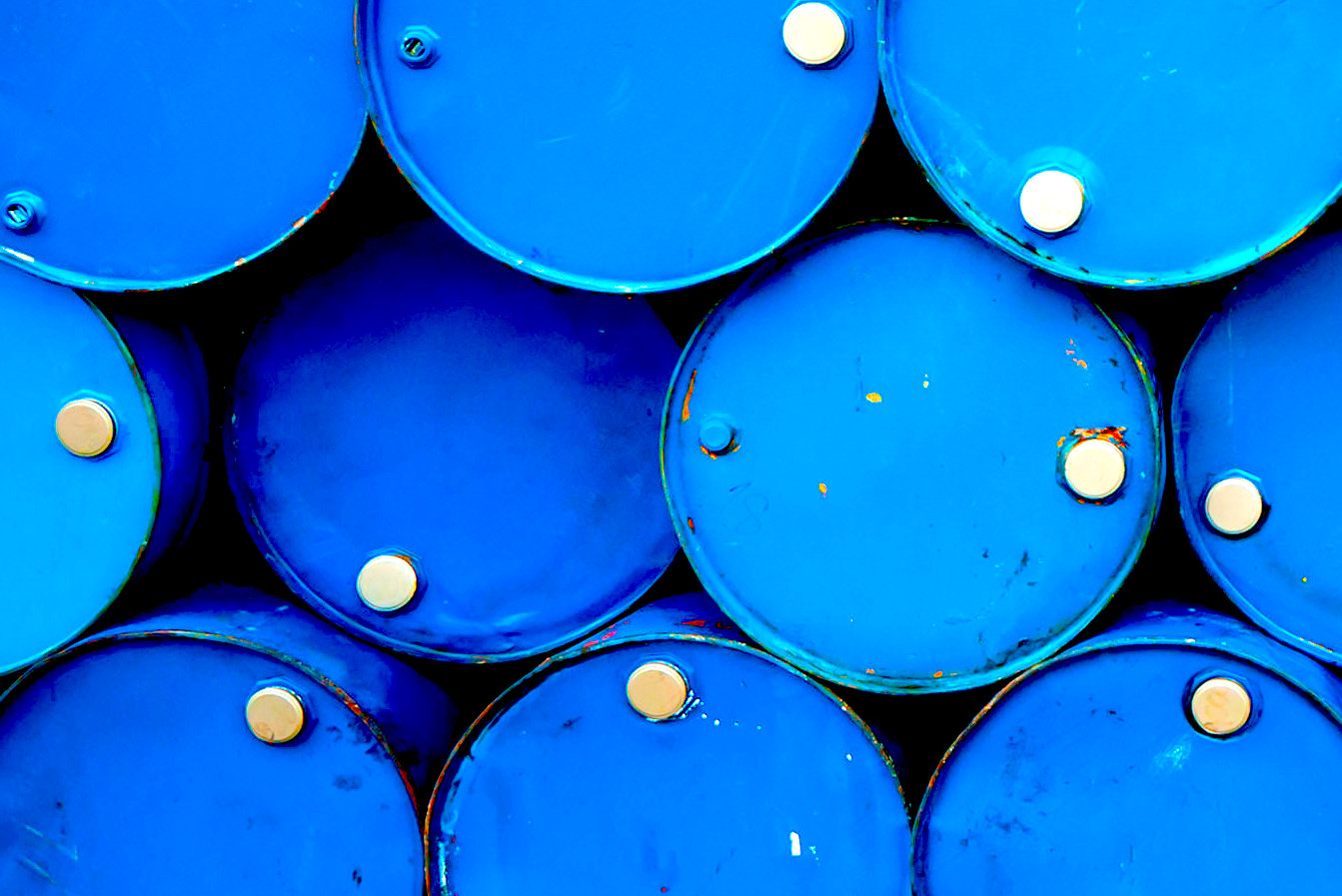by Dillon Culhane, CFA®, CPA, CA, AGF Management Ltd.
Russia’s invasion of Ukraine has caused commodity prices to spike around the world, driving up inflation and fears of slowing economic growth. Despite a pullback in recent days, energy prices have moved up significantly, building on last year’s increases in a fundamentally tight market, driven by supply under-investment and rising demand as COVID restrictions are lifted around the world. A ceasefire would likely cause oil and gas prices to fall near-term, but the global dynamics have clearly shifted toward energy security in an attempt to diversify away from Russia, which likely limits the potential of a significant long-term correction.
Russia is the world’s third largest oil producer and second largest natural gas producer, with the European Union (EU) relying on them for more than 30% of its oil imports and 40% of its natural gas, according to the International Energy Agency (IEA). Since the Ukraine invasion, EU leaders have been discussing ways to cut dependence on Russian energy, but there is no easy solution near-term.
Russia is also the world’s largest exporter of crude oil and oil products at 7.5-8.0 million barrels per day (mb/d), with 60% of this flowing to the EU and 20% to China per the IEA. The United Kingdom, United States and Canada all recently banned Russian oil imports and while the EU is not in a position to do so near-term, it announced plans to phase out Russian oil imports by 2030.
Moreover, there has been significant self-sanctioning by refiners, shippers and traders who refuse to buy Russian oil due to worries about image, potential sanctions, counterparty risk and higher shipping and insurance rates. Reports estimate that 3-4 mb/d of Russian oil is having trouble finding buyers, despite record discounts of up to US$30 per barrel offered on cargoes, which is simultaneously driving up prices in other global oil grades like Brent and West Texas Intermediate (WTI).
Any reduction in Russian oil exports cannot be easily replaced near-term. OPEC is estimated to have 2.5-3.0 mb/d of spare capacity but is reluctant to boost production ahead of schedule in case it endangers the OPEC+ alliance with Russia. An Iranian nuclear deal with Western nations appears close, but additional barrels would take months to hit the market after necessary verification measures and sanctions removal. U.S. shale production, meanwhile, is unlikely to ramp-up quickly given labour and supply chain constraints combined with producer capital discipline. Lastly, any material supply increase from Venezuela would require significant capital investment and debt restructuring.
This all means that oil prices must rise to incentivize demand destruction to balance the market, as seen with some European distributors now limiting supplies of diesel and heating oil. Soaring gasoline and jet fuel prices will likely drive a consumption slowdown in certain countries, but so far this has been mitigated by pent-up demand recovery as we emerge from COVID restrictions.
Natural gas is an even larger problem given its critical role in heating, power generation and industrial output, with more than 40% of EU gas consumption imported from Russia. Natural gas is harder to transport by sea since it must be liquefied before shipping in tankers, and with limited excess liquefied natural gas (LNG) export capacity globally, Russian pipeline gas imports cannot be replaced anytime soon. There have been no physical disruptions thus far, but the fear of flows being cut off – due to sanctions, Russian retaliation or pipeline damage in Ukraine – caused EU gas prices to spike over 300% in the days following the invasion per Bloomberg. Prices have since moderated, but are still up over 60% from mid-February, trading at 7.5 times U.S. natural gas prices or US$220 per barrel on an oil-equivalent basis.
Similar to oil, these elevated natural gas prices are incentivizing demand destruction, which we’re seeing with some industrial companies cutting back output in the EU. Demand for residential heating and power is much less elastic (especially in winter) and government support for households has been rolled out in many countries. Earlier this month, the EU Commission outlined measures to reduce reliance on Russian gas by 65% by year-end 2022 and displace it entirely by 2030. Strategies include diversifying LNG and pipeline imports from other countries, refilling and expanding gas storage, energy efficiency measures, and accelerating renewable energy growth – all of which take time to implement. Growing domestic gas production and delaying nuclear and coal power plant shutdowns have also been discussed, but remain uncertain for now.
All of that said, the Russian invasion of Ukraine has brought energy security to the forefront for many nations, likely reinforcing an “all of the above” approach to increase and diversify supplies of oil, gas, renewables and potentially even nuclear power. It seems likely that more Russian energy flows eastward toward China and India long-term, displacing some imports from the Middle East and U.S. that would get re-routed toward Europe.
Ultimately, a resolution of the Ukraine crisis, an Iran nuclear agreement, or increased COVID lockdowns in China are all likely to cause energy prices to fall near-term, but longer-term it seems they have clearly reset higher due to the conflict. It’s unlikely that sanctions against Russia get unwound quickly and many Western companies may never return. This lack of capital, technology and equipment may impair Russia’s ability to maintain and grow energy production, meaning a certain proportion of its supply may come off the market for good.
To learn more about our global equity capabilities, please click here.
The views expressed in this blog are those of the author and do not necessarily represent the opinions of AGF, its subsidiaries or any of its affiliated companies, funds, or investment strategies.
The commentaries contained herein are provided as a general source of information based on information available as of March 14, 2022 and are not intended to be comprehensive investment advice applicable to the circumstances of the individual. Every effort has been made to ensure accuracy in these commentaries at the time of publication, however, accuracy cannot be guaranteed. Market conditions may change and AGF Investments accepts no responsibility for individual investment decisions arising from the use or reliance on the information contained here.
References to specific securities are presented to illustrate the application of our investment philosophy only and do not represent all of the securities purchased, sold or recommended for the portfolio. It should not be assumed that investments in the securities identified were or will be profitable and should not be considered recommendations by AGF Investments.
“Bloomberg®” is a service mark of Bloomberg Finance L.P. and its affiliates, including Bloomberg Index Services Limited (“BISL”) (collectively, “Bloomberg”) and has been licensed for use for certain purposes by AGF Management Limited and its subsidiaries. Bloomberg is not affiliated with AGF Management Limited or its subsidiaries, and Bloomberg does not approve, endorse, review or recommend any products of AGF Management Limited or its subsidiaries. Bloomberg does not guarantee the timeliness, accurateness, or completeness, of any data or information relating to any products of AGF Management Limited or its subsidiaries.
This document is intended for advisors to support the assessment of investment suitability for investors. Investors are expected to consult their advisor to determine suitability for their investment objectives and portfolio.
AGF Investments is a group of wholly owned subsidiaries of AGF Management Limited, a Canadian reporting issuer. The subsidiaries included in AGF Investments are AGF Investments Inc. (AGFI), AGF Investments America Inc. (AGFA), AGF Investments LLC (AGFUS) and AGF International Advisors Company Limited (AGFIA). AGFA and AGFUS are registered advisors in the U.S. AGFI is registered as a portfolio manager across Canadian securities commissions. AGFIA is regulated by the Central Bank of Ireland and registered with the Australian Securities & Investments Commission. The subsidiaries that form AGF Investments manage a variety of mandates comprised of equity, fixed income and balanced assets.
® The “AGF” logo is a registered trademark of AGF Management Limited and used under licence.
RO:20220317-2082654
About AGF Management Limited
Founded in 1957, AGF Management Limited (AGF) is an independent and globally diverse asset management firm. AGF brings a disciplined approach to delivering excellence in investment management through its fundamental, quantitative, alternative and high-net-worth businesses focused on providing an exceptional client experience. AGF’s suite of investment solutions extends globally to a wide range of clients, from financial advisors and individual investors to institutional investors including pension plans, corporate plans, sovereign wealth funds and endowments and foundations.
For further information, please visit AGF.com.
© 2022 AGF Management Limited. All rights reserved.
This post was first published at the AGF Perspectives Blog.














